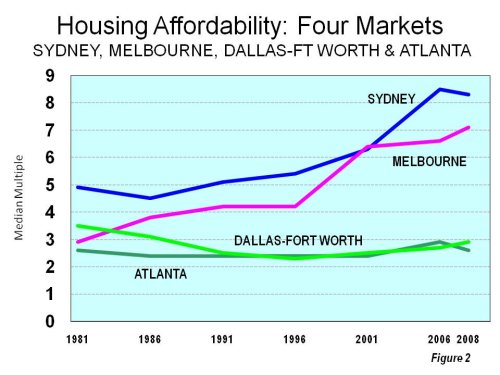
Indeed, Dallas-Fort Worth and Atlanta have grown more than all Australia’s capital cities combined since 1981 (population and urban footprint). Yet, sufficient new infrastructure was provided and taxes remained low by national standards. City planning orthodoxy in Australia says this is impossible. Finally, even with more people and land area, Dallas-Fort Worth and Atlanta have average work trip travel times less than Sydney.
Depth of the problem
Australia may have missed the Great Recession, but its housing affordability remains abysmal. A recent Bank West report (PDF 1.71MB) found that only 5 to 20 per cent of key workers could afford the median priced house in capital cities (nurses, teachers, police officers, fire fighters and ambulance workers). The irony is not lost on RBA Governor Glenn Stevens who wisely observed in a recent Melbourne conference that, “It's a question of how is it, in a country this big in area and this small in numbers of people, we can't manage to make the marginal price of a dwelling lower than it is”.
Advertisement
Clearly something needs to be done. Luck is running out for the next generation of Australians. They will have to pay much more of their income for housing than their parents. This will mean that they will have less to spend on consumer goods and, as a result, fewer jobs will be created. As a result, the next generation is not likely to live as well as their parents.
Discuss in our Forums
See what other readers are saying about this article!
Click here to read & post comments.
9 posts so far.